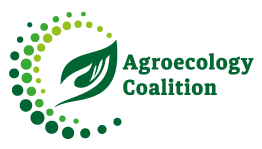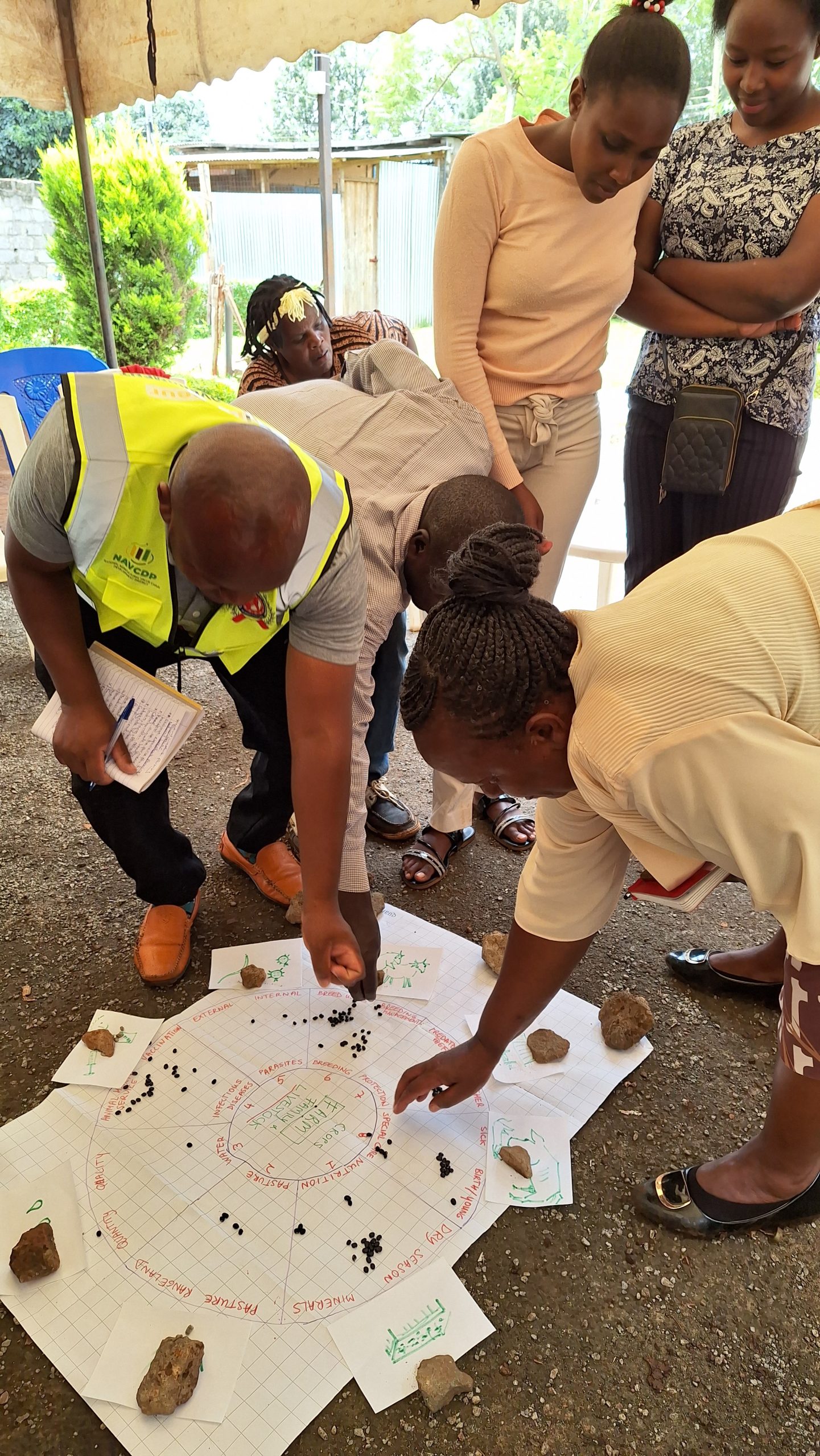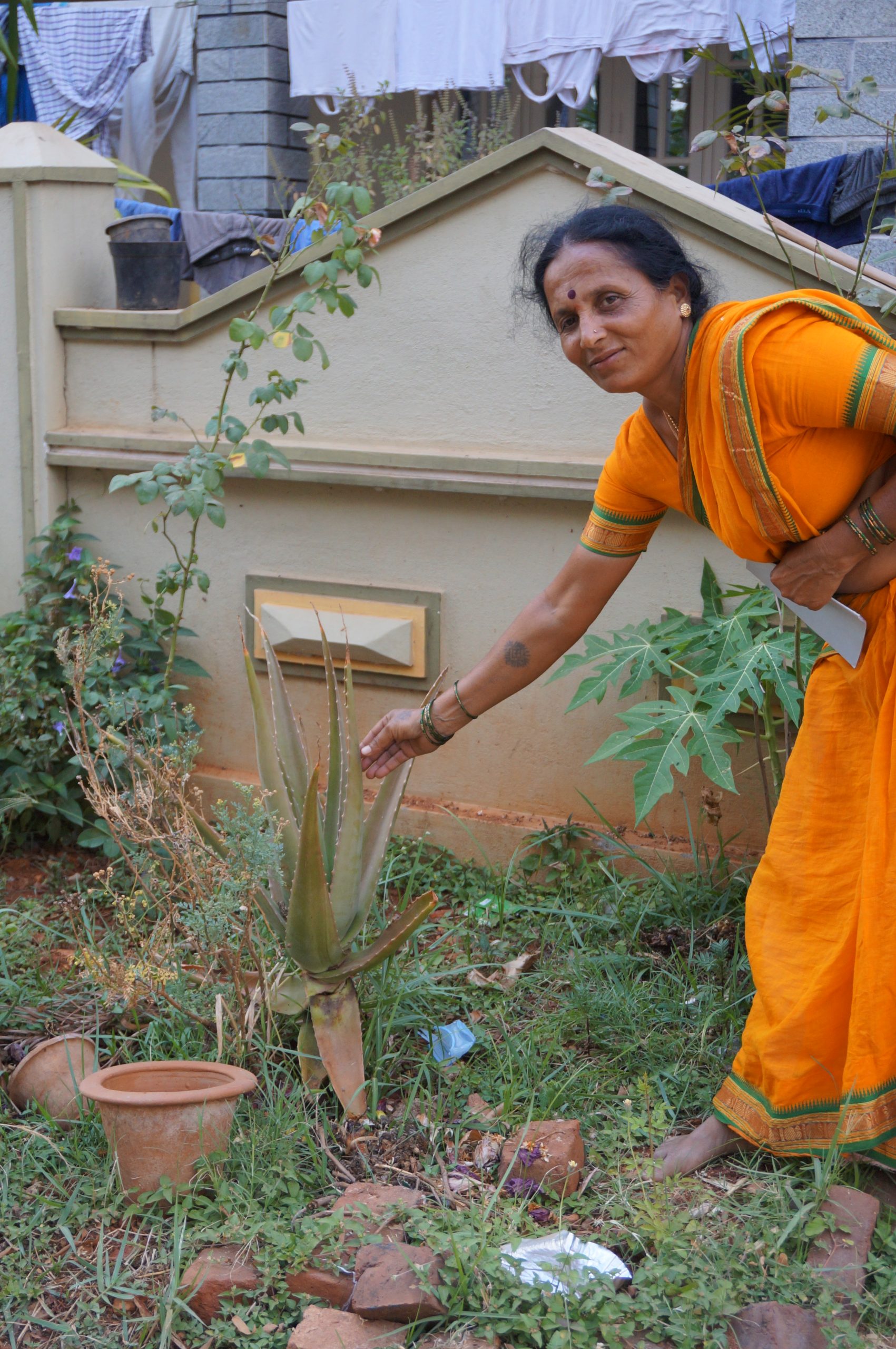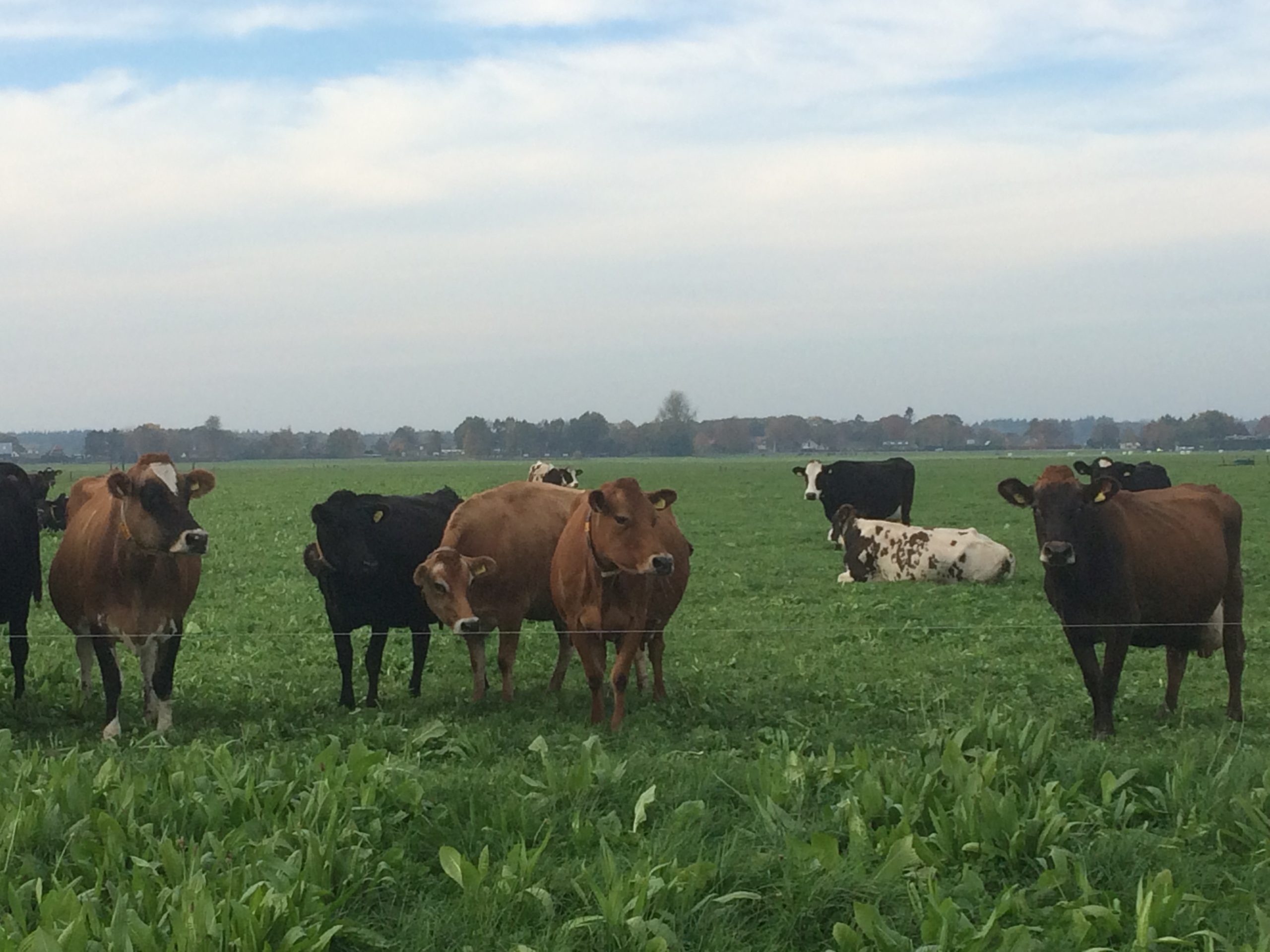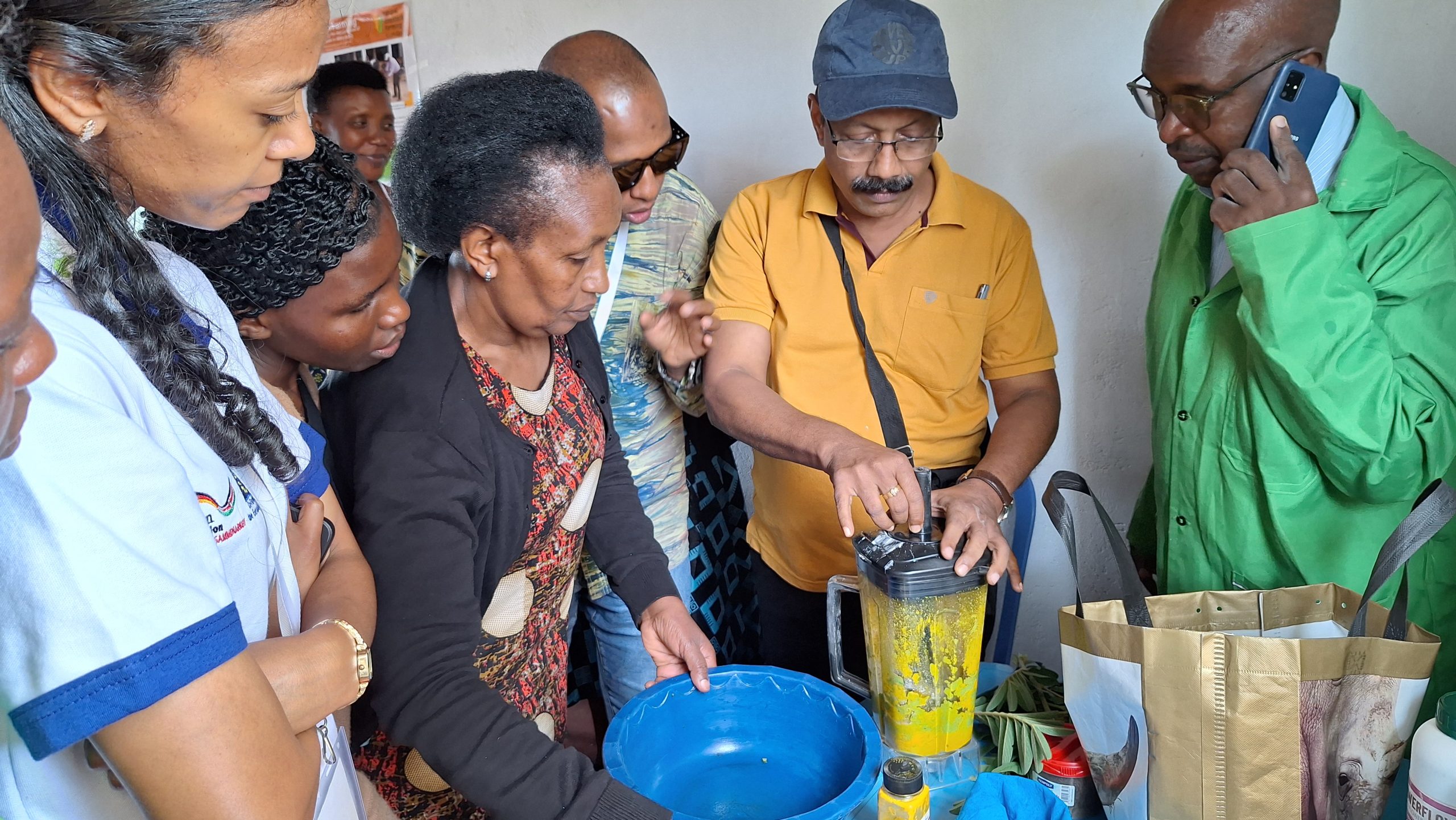Natural Livestock Farming
India, Uganda, the Netherlands, Ethiopia, Kenya
Ethno-veterinary medicine as an integrated part of the Natural Livestock Farming integrated approach for livestock health and responsible use of antibiotics and other chemical veterinary drugs in veterinary health care.
Lead organization
Natural Farming Foundation (partners in the Netherlands, Uganda, Ethiopia, India) and Institute of Transdisciplinary Health Sciences and Technology (TDU) based in India.
Country
India, Uganda, the Netherlands, Ethiopia, Kenya
Timeline
2014- ongoing
Mission
Natural Livestock Farming promotes an effective bottom-up One Health approach:
- Healthy livestock: Reduced disease and mortality, Improved productivity, Improved animal well being
- Healthy people: Higher food security, better income for farmers, less chemical residues in animal sourced food, lower antibiotic resistance in human bacteria (AMR)
- Healthy environment: Reduced environmental pollution with chemicals, Improved soil health, Improved water quality, Improved biodiversity
Context
The project is implemented in India, Uganda, the Netherlands, Ethiopia, Kenya and currently focuses on dairy farming to address the multiple challenges in the sector:
- Excessive crossbreeding with high-producing cattle breed (Holstein Friesian), resulting in livestock un-adapted to local (environmental) conditions
- High incidence of disease, ticks and worms
- Inappropriate use of antibiotics and other chemicals
- Antibiotics, dewormers and insecticides increasingly ineffective
- Food quality, livelihoods and biodiversity affected
- Growing threat due to Mycotoxins in livestock feed, economic loss > 5 billion/year in Africa (25% of total)
Strategy
Objectives
This international collaboration organizes knowledge exchange between India, Netherlands, Ethiopia, Uganda, Kenya for solving critical livestock health issues on basis of:
- Effective combination of farmers’ knowledge, western veterinary science and Indian Ayurveda science
- Pilots followed by scale-up phase in both smallholder and large-scale livestock production
- Proven effects in (preventive and curative) livestock health, milk quantity & quality through lab validation,
- Adapted livestock education and government policies
Together an integrated livestock health approach was developed, the so-called Natural Livestock Farming five-layer strategy. Use of medicinal plants, or Ethno Veterinary Practices are an integrated part of this strategy (Layer 3)
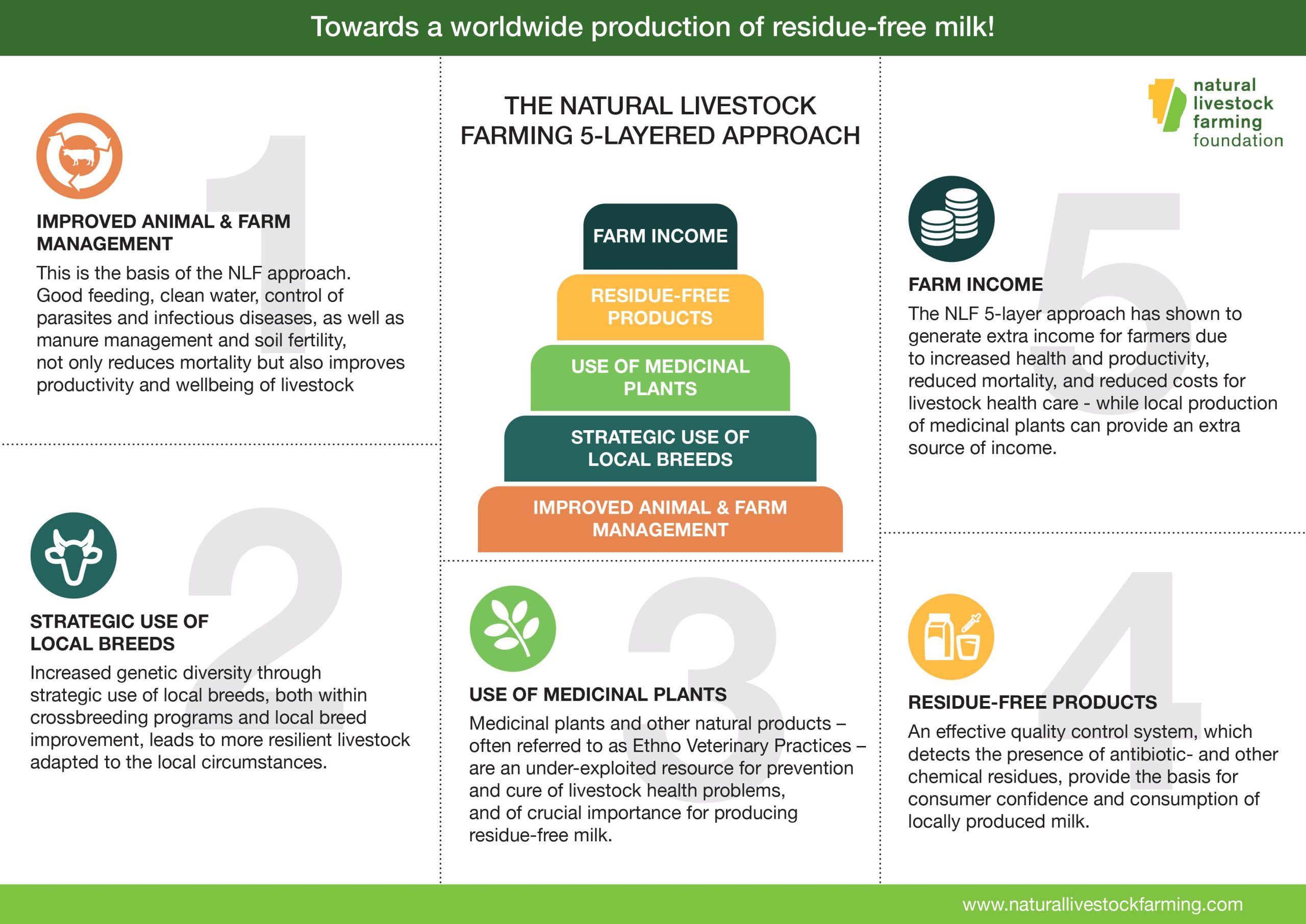
Activities
1. Activities in India:
India is the largest dairy producer in the world (21% of global dairy production) on the basis of 98% small scale dairy farmers with 2-5 cows, in majority women. India has a rich ethno-veterinary health tradition:
- Codified systems (Ayurveda, Siddha, Unani and Tibetan) are based on the theory of physiological functioning, disease etiology and clinical practices.
- Non-codified oral or folk traditions: as old as humankind. Symbolic relationship with codified system, dynamic, innovative, spread across 4639 ethnic communities all over India. They are location and ethnic community specific health related practices, lifestyles, food habits, customs, and beliefs. One of the key challenges is to find out the effectiveness and contemporary relevance of these practices (Safety and Efficacy). Revalidating these formulations based on western pharmacology is a cross-cultural and trans-disciplinary exercise.
Activities
1. Activities in India:
India is the largest dairy producer in the world (21% of global dairy production) on the basis of 98% small scale dairy farmers with 2-5 cows, in majority women. India has a rich ethno-veterinary health tradition:
- Codified systems (Ayurveda, Siddha, Unani and Tibetan) are based on the theory of physiological functioning, disease etiology and clinical practices.
- Non-codified oral or folk traditions: as old as humankind. Symbolic relationship with codified system, dynamic, innovative, spread across 4639 ethnic communities all over India. They are location and ethnic community specific health related practices, lifestyles, food habits, customs, and beliefs. One of the key challenges is to find out the effectiveness and contemporary relevance of these practices (Safety and Efficacy). Revalidating these formulations based on western pharmacology is a cross-cultural and trans-disciplinary exercise.
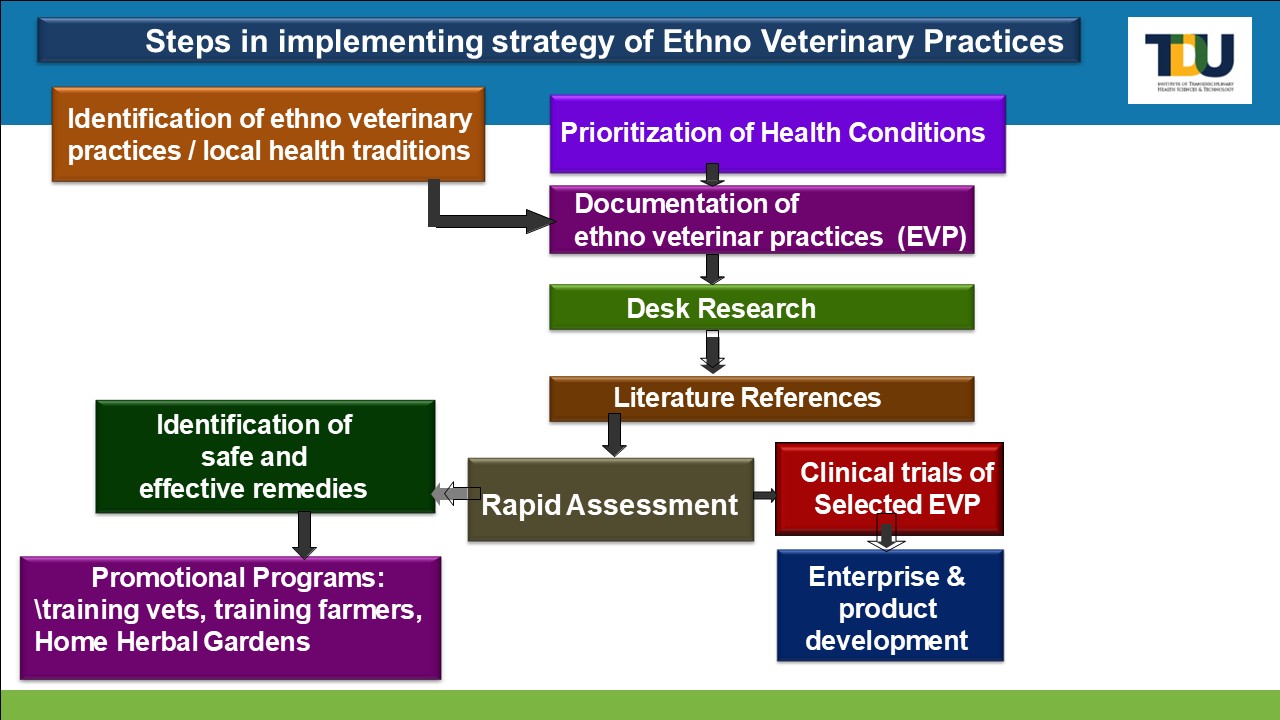
Alternative approach: efficacious and safe Ethno Veterinary Practices (herbal formulations) are used in preventing and curing clinical conditions in livestock. Thereby the drug residues in the milk and other food products of animal origin are reduced. Since 1998 NLF India, comprising of the Trans Disciplinary University (TDU) and GLOHMSIWA, have documented, assessed and promoted local health tradition (LHT) including herbal formulations and Ethno Veterinary Practices (EVP) for the most important cattle diseases, including mastitis, calf diarrhea, repeat breeding and Foot & Mouth Disease (FMD), following the steps presented below:
Activities implemented by the Trans Disciplinary University (TDU):
- Documented 441 herbal formulation for 51 conditions from 10 states and 25 locations
- Listed 302 Medicinal plants and 16 other materials used in the Ethno Veterinary Practices
- Trained over 3134 veterinarians, 10.076 Animal Health personnel and 30.000 dairy farmers
- Produced EVP Popularization brochures in 13 languages, together with National Dairy Development Board (NDDB)
- Established 613 demonstration plots across the country (TDU and NDDB data)
- Developed 4 herbal products for: Mastitis, External parasites, Immunity booster balls and Wound oil.
- EVP now acknowledged as part of National Agricultural Policy
- Support to NLF exchanges and projects in Netherlands, Uganda, Ethiopia and Kenya
2.Activities in Uganda (implemented by Lake Mburo Farmers Cooperative Society and SEANEBC)
Livestock in Uganda is kept mostly under grazing conditions and suffers from ticks that present high resistance to the common insecticides. In Uganda, Natural Livestock Farming is operating in two farmer-led projects in the dry areas of South and Central Uganda. The focus is on a combination of promoting Ethno Veterinary Practices, including for tick control, income diversification, selective breeding strategies and natural fencing of grazing areas.
The Lake Mburo Farmers Cooperative Society (LMFCS) in South West Uganda promotes a range of practical actions. The establishment of a milk cooler, the cooperative production of yoghurt and butter by women and sale by young community members has attracted many farmers to join the cooperative. Income diversification activities also include bee keeping and indigenous tree species (10.000 Macamia). Breeding project with Vleckvieh insemination was started together with the National Genetic Resource Centre. An initiative on maintenance of the local Ankole breed, through re-stocking and construction of live fence material, was undertaken in the central Cattle Corridor.
In 2025, Natural Farming Livestock in Uganda was joined by SEANEBC (South-East and North-East Uganda Development Action). The organizations has started a Community Dairy Farming project for around 500 smallholder farmers.
3.Activities in Ethiopia (implemented by the Ethiopian Society of Animal Production (ESAP))
In Ethiopia, the Natural Farming Livestock activities are headed by the Ethiopian Society of Animal Production (ESAP), a society of over 500 livestock professionals. Between 2018 and 2020 ESAP implemented a pilot of the NLF 5-layer strategy “Enhancing Safety and Quality of Milk in Ethiopia” with smallholder dairy producers in two peri-urban communities, under the umbrella of the Applied Research Fund (ARF) of the Dutch government. Experts from NLF India provided a training course on the use of medicinal plants, while exports from NLF in the Netherlands guided training on laboratory skills, calf care, hoof trimming and housing.
4.Activities in the Netherlands (implemented by Platform Natuurlijke Veehouderij)
Natural Livestock Farming in the Netherlands is an independent entity registered as Platform Natuurlijke Veehouderij, collaborating with Louis Bolk Institute, Veterinary Knowledge Centre (VKON) and Wageningen Food Safety Research. Antibiotic use in Dutch dairy farming for mastitis control used to be high, especially dry cow treatment. Since 2014 – forced by government legislation – antibiotic use in the dairy sector was reduced 70%, including replacement of antibiotics for dry cow treatment with herbal products. Moreover, farmers have started to use herbs in the grassland and cattle feed. This posed a challenge due to lack of knowledge amongst farmers and veterinarians about this.
In the Netherlands, the Natural Livestock Farming five-layer strategy is being adapted to large-scale dairy farming. In 2022 Dutch farmers were under major stress due to environmental legislation of the EU, due to growing environmental degradation. The intensive dairy/livestock system is no longer complying with EU regulations. Since 2014, Natural Livestock Farming in the Netherlands trained more farmers and veterinarians on the use of herbs in grasslands and safe use of ready-made herbal products available in the market. Carbon farming is an opportunity that is coming up in which herbal grassland can play a crucial role for improved soil fertility.
Other activities include:
- Training over 400 large scale dairy farmers on herbal grassland and safe use of herbal products in large scale dairy production
- Courses on safe use of herbal remedies for veterinary practitioners
- Stable Books on herbal remedies and livestock management (on 8 livestock species) renewed and promoted
- In 2022 NLF Netherlands is the networking partner in the Kennis op Maat (Adapted Knowledge) program on Herbal Products, coordinated by Wageningen University. Project phase 2 included spreading knowledge on safety of herbal products in veterinary education & agricultural schools
- NLF master course for 5th year veterinary students started in 2025
5.Activities in Kenya (implemented by Effective IPM Association (EIPMA))
Natural Livestock Farming activities started in 2024 in Kenya. Since then, two Presentations made during Second East Africa Agroecology Conference in Nairobi (March 2025) and two successful Natural Livestock Farming demonstrations for farmers and conference participants with Effective IPM Association were delivered.
Effects and Impacts
Results and impacts in India:
- Ethnoveterinary practices adopted by National Dairy Development Board (NDDB) in 2018
- Since 2022: Natural Farming adopted in national agricultural policy
- In 2024: Ethnoveterinary practices included in Standard Veterinary Treatment Guidelines
- 1.060.000 cases treated for 34 disease conditions using EVM shows overall 80% cure (National Dairy Development Board (NDDB) data)
- The recovered animals produced 7.3 % additional milk/day
- Intervention impact study indicates 87.78% reduction of antibiotic residue in the milk in the study area after one year of training
- 91% average disease reduction: reduced the incidence of Mastitis (84%), Enteritis (98.2%), infertility (98.2.7%), Pox like disease on the udder (100%)
- A total of 79,832 veterinary service calls from farmers have been reduced in 2019-20 compared to 2017-18. (NDDB data)
- Natural Livestock Farming practices enabled having healthier and more resilient animals
- Increased awareness on ethno-veterinary methods among stakeholders
- Increased awareness about risks of antibiotic residues in milk
- Improved milk production and quality
- Reduced use of antimicrobials and their residue in the milk and the environment (water bodies, soil and crops)
- Less need for dewormers and acaricides
- Improved environment and biodiversity
Results and impacts in Ethiopia:
- 50% increase in milk quantity
- 33% increase in farm income
- 20% reduction of average costs for cattle health
- 60% reduction in calf mortality
- 8% reduction of antibiotic residues in milk, 50% reduction E-Coli
- 5 Universities are collecting data on local practices with herbs
- March 2023: approach included into Ethiopian Government Livestock Strategy
- Collaboration with Veterinarians without Borders: VSF France (AVSF) in southern Ethiopia
- In 2025, an Memorandum of Understanding was signed with Jigjiga university to promote Natural livestock Farming and Ethno Veterinary practices in pastoralist societies.
Results and impacts in Uganda:
- Fast growing memberships
- Youngsters involved in local sales of yoghurt and butter
- Improved farm income
- Proposed project on NLF training and EVP (SENEABC)
- Makarere University (AFRISA School of Veterinary Science & Technology) involved
- Fast growing numbers and enthusiasm of cooperative membership: from 45 to 176
- Growing community level yoghurt making (from 200 to 600 liters per week) by women & transport by two marketeers (youngsters) to urban areas.
- Improvement of installation, with water harvesting tank (20.000 liters) and concrete floor
Results and impacts in Kenya:
- Major farmer interest
- Joint initiative with World Animal Protection (WAP) planned
Results and impacts in the Netherlands:
- 400 farmers and 50 veterinarians trained on herbal grasslands and safe use of herbal products
- Herbal grasslands re-introduced in over 10 % of dairy farms
- Natural Milking project for farmers
- Natural Livestock Farming course for vets starts 2025.
Lessons learned
Natural Livestock Farming and Ethno Veterinary Practices contribute to all 13 principles of agroecology, but especially:
No. 4: Animal health
- Effective livestock disease prevention and cure
- Reduced disease morbidity and mortality
- Livestock better adapted to their local environment
- Effective housing and feeding of livestock
- Livestock more productive
No.8: Co-creation of knowledge
- Trans-disciplinary use and understanding of different knowledge systems
- International exchange programs
- Farmers study groups (local and international)
- Data gathering: validation of local practices with laboratory quality control of livestock products
No. 3: Soil Health
- Reduced levels of unwanted residues in manure
- Manure composted from crop residues and animal dung enhances soil life and provides natural fertilizer
No. 5: Biodiversity
- Revival and improvement of local livestock breeds
- Reduced use of insecticides enhances biodiversity
- Increase in use of herbal grassland
- Re-established natural fences
- Improved water quality due to reduced use of chemicals
Other contributions include:
- Bottom-up approach for antimicrobial resistance (AMR) crisis and regulations – anticipating to more stringent antibiotic-use policies
- Effective use of lessons learnt in dairy development in The Netherlands and India
- Support smallholder farmers as well as and large-scale farmers
- Potential for upscaling also with pastoralist communities
- Linkage local practices with laboratory food quality validation
Challenges for Natural Livestock Farming
The numerous challenges we are facing for upscaling the NLF approach include the following:
- Veterinary education: For improving livestock health with minimum levels of chemicals farmers need to support of veterinarians. However, formal veterinary education is focusing mainly on diagnosing and curing livestock disease with chemicals remedies rather than prevention, leading to non-understanding of the alternative approach based on increased resilience of livestock and non-chemical ways of preventing and curing disease. This leaves farmers with interest without effective support from their veterinarians. Moreover, veterinarians are bringing this vision into high level government, research and educational programs.
- Farmer dependence on chemical remedies : Most farmers and livestock keepers are now used to using antibiotics, dewormers and insecticides for their livestock health, as over the past decades these have been promoted in livestock health programs at all levels. Due to this the awareness on the need for using less chemicals is very low. The need to control their use is growing, however, due to resistance of microbes to antibiotics (AMR), as well as resistance of worms against dewormers, and ticks against acaricides. This requires a great effort at all levels, for farmers and other players in the sector alike.
- Income of veterinarians and chemical industries: Throughout the world, veterinarians depend on the sales of chemical remedies for their income. This complicates the change towards preventive and non-chemical livestock health services. Moreover, chemical industries stimulate the sales of veterinary drugs and other chemicals at all possible levels, including by funding (international) veterinary associations.
- Non-chemical approach requires integrated vision: To reduce the levels of chemicals in livestock production systems, the animals need to be within an integrated agro-ecological production system. This is not yet a prioritised development perspective within most governments. Moreover, the livestock production need to aim at optimising rather than – which is a no-go in conventional livestock development programs.
- Livestock seldom part of Agro-Ecology programs: Though livestock is always integrated into agro-ecology activities at farm level, this is not the case at the levels of NGO’s, research and education. This negatively effects the necessary development of knowledge and practices for an integrated approach at all levels.
- Lack of research and funding: Dominant livestock research and development programs are maximising rather than optimising productivity. This leads to research and funding almost fully to this direction. Only over the last decade this is gradually changing, in part due to the growing awareness about the dangers of microbes resistant to antibiotics (AMR). However, the programs to change this are basically focusing on control systems of food (end of the chain), rather than prevention of the use of chemicals in livestock production (at the start of the chain). This leads to extremely limited research and funding of programs in this direction.
I truly appreciate Natural Livestock Farming Foundation for being the bridge to transfer knowledge of the alternative natural remedies for mastitis (udder infection). I really am happy that we now have alternative medicine which is natural and easily available. It really is like first aid, especially for treating diarrhea in calves. It is great.
The use of ethno veterinary practices in Kenya will bridge the gap between culture and science – as livestock keepers have practical remedies rooted in indigenous knowledge
The Natural Livestock Farming elective master course has given me an idealistic yet realistic glimpse into what the agricultural sector could look like in the future. It has given me the tools to support farmers who embrace change and to safeguard animal health and welfare in the process.
Future veterinarians need to be able to think about the ways to promote sustainable agriculture, understand mineral cycles in the soil, how to feed cows without excess protein and how to increase productive life expectancy of dairy cattle. In the end it is all about healthy livestock – the basis of veterinary care
Hyperlinks
Natural Livestock Farming Foundation, click here.
NLF in India: Trans Disciplinary University (TDU), click here.
NLF in Ethiopia: Ethiopian Society of Animal Production (ESAP), see here and here .
NLF in Netherlands (Platform Natuurlijke Veehouderij), see here (in Dutch) and here .
NLF in Uganda, see here
NLF in Kenya: Effective IPM Association, see here.
Contact
Katrien vant Hooft: katrien@naturallivestockfaming.com
- M.N.Balakrishnan Nair: nair.mnb@tdu.edu.in
Picture credits: Natural Farming Foundation
